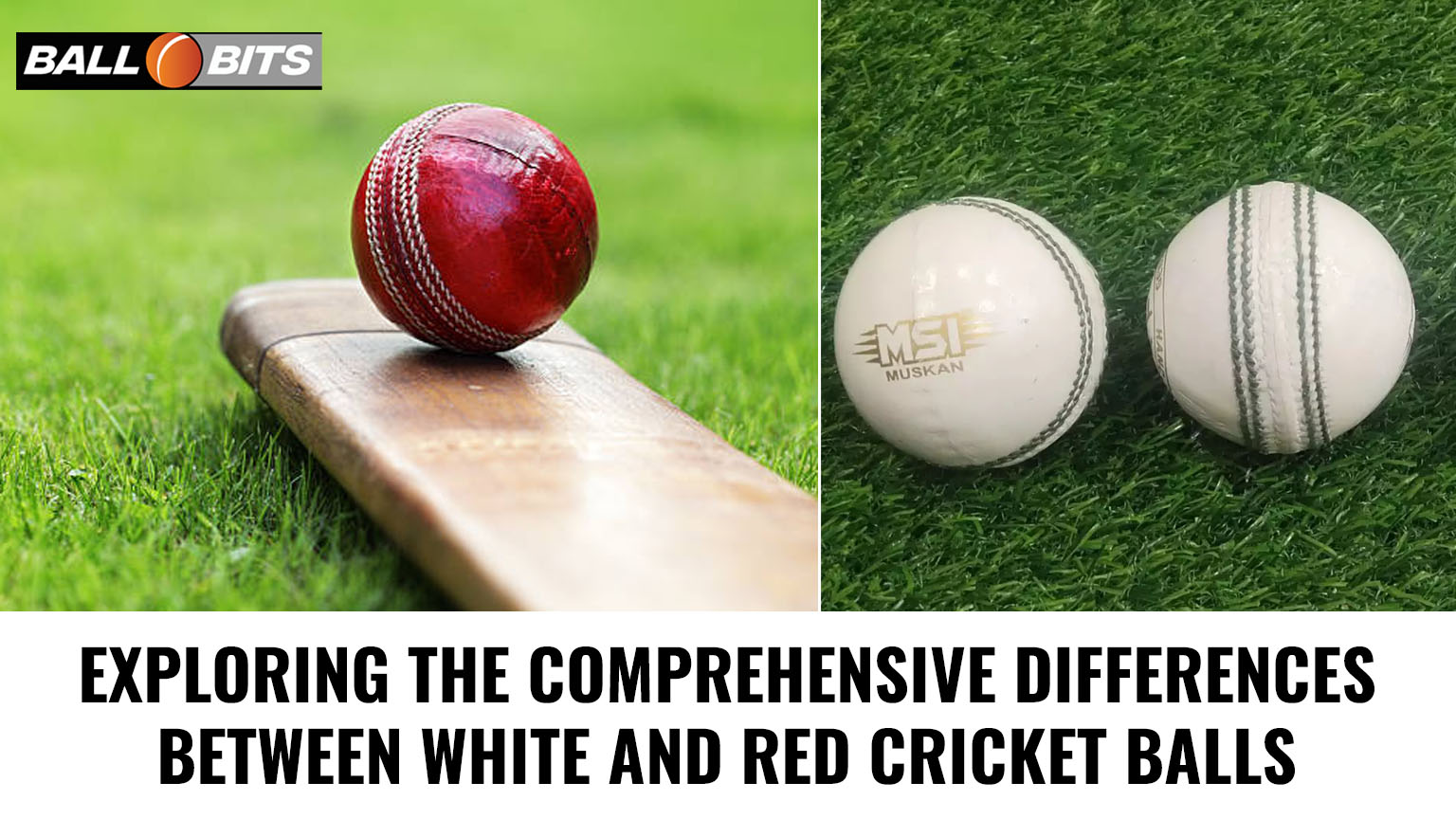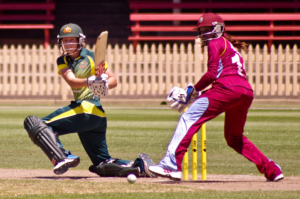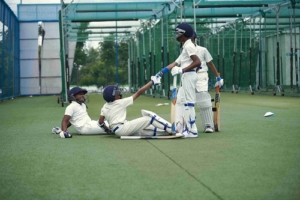
Cricket started decades ago and has been using different rules and gameplay over the years. There have been many minor and major changes in their gameplay and rules. One such change is the ball replacements in different formats of cricket. Earlier when cricket started, red balls were the only choice to play cricket. However, with the limited-over cricket format coming, the white ball was introduced in cricket. Since the red balls have less visibility and less swing potential as they get older. Hence, they were replaced by the white balls in limited-overs cricket. Balls play a huge role in the game of cricket and it is very important to have the right choice of balls to play cricket on a professional level. Both red and white balls have their perks and differences. Here we will explore more about the difference between white and red cricket balls in detail. Let’s have a look at them!
Below is The Table of Differentiation of Factors Between White and Red Cricket Balls
| Sr.No | Factors | White Cricket Ball | Red Cricket Ball |
| 1 | Visibility | White cricket balls have more visibility during the long hours of matches. | Red balls are not visible after a certain period. Hence, it has less visibility compared to white balls in longer matches. |
| 2 | Durability | White balls are less durable than red balls. | Red balls are more durable than white balls. |
| 3 | Swing | White balls considerably have less swing potential than red balls. Its dyed leather material makes it less suitable for swing bowling. | Red Balls have more swing potential than white balls due to their pronounced seam and dyed leather material. Its material helps the bowler to get a grip on the surface and helps to swing the ball. |
| 4 | First-Class Cricket | White balls are not used and are preferred in First-class cricket. | Red balls are used and preferred in First-class cricket over white balls. |
| 5 | Limited-Overs Cricket | White balls are used in limited-overs cricket due to the visibility factor. | Red balls are not used in limited-overs cricket due to the visibility factor. |
How Cricket Balls Are Made
The cricket balls have different layers in their construction. Their hard outer layer is made up of leather that makes the ball in a spherical shape. The next layer after this leather exterior layer of the ball is the chunk of cork as the core of the ball. These chunks of cork are surrounded by a bunch of strings that hold the core tightly and maintain the spherical shape of the ball.
The next step is to measure the weight of all the components used to make the ball. The universal weight of a ball is 155.9-163.0 grams. Then a certain type of leather is chosen and divided into four pieces. All the pieces are stitched together around the string-spun chunk of cork with the ball getting stitched around the equator. The stitches are visible on the ball and it helps the bowlers to get the grip.
The last step of making the ball is to dye the wrapped leather on the exteriors of the ball.
Red, white, and pink are dye options that are commonly used in cricket balls. Once the dye is completed, many polishes are applied to the ball. Plus the ball is stamped with manufacturers or company names at the end.
Different Cricket With Different Colors of Balls
Each format of cricket has a rule to use a different ball in their respective matches. Red balls are mainly used in Test matches. These balls have been used since the inauguration of test cricket. At the same time, the white balls are mainly used for One-Day International (ODI) and Twenty20 (T20) limited overs formats. However, since cricket sports were started they have used red ball as their primary option. However, later on, due to issues of visibility white balls were introduced in limited overs format.
Comparison of Swing Potentials of Red and White Cricket Balls
The swing potential of red and white cricket balls has no definite answer to it. There are many factors and characteristics which affect the swing potential of the red and white balls. Red balls have a better inclination towards swing bowling due to their dyed leather construction and pronounced seam. The materials are very helpful in holding the grip from the surface. White balls are constructed using dyed leather which creates a major contrast between the two sides: the shiny and rough sides of the white ball.
In addition, old red balls tend to generate more reverse swing in long matches. Whereas, white balls didn’t tend to be the ideal choice to generate swing once it is older. This is because of the material alum-tanned leather used in making the white balls. Also, there is no ultimate agenda for the swing potential of white and red balls in cricket. Sometimes the bowler’s skills and technique make the old white ball swing more than an old red ball and vice versa. Hence, the swing potential of white and red balls cannot be categorized based on certain factors. It can change in various situations, using the best skills and many other things that will increase or decrease the white and red ball swing potential.
Factors Affecting The Swing Potential of White and Red Balls
There are many factors affecting the swing potential of white and red balls, they are as follows
| Factors | White Ball | Red Ball |
| Materials and construction of Balls | White balls are constructed using alum-tanned leather. This material provides a more resistant and less prominent seam. | Red ballas are constructed using dyed leather. This provides more seam and increased swing potential. |
| Condition of Ball | White balls tend to provide better reverse swing if they are older and rough. | Whereas, the red balls that are new with rough and shiny sides provide good swing. |
| Condition of Atmosphere | The white ball tends to swing more in humid and overcast conditions due to moisture holding a grip on the surface. They don’t swing much in dry and sunny atmospheric conditions. | Red balls don’t swing in humid and overcast conditions. Whereas, its conductive seam gets better in dry and sunny atmospheric conditions that help in swing potential. |
| Skill and technique of Bowling | The swing of the red ball also depends on the skills and technique of the bowler. If he knows the ability to master the proper line, length, and grip to hold the bowl then he can swing the red ball. | The swing of the red ball also depends on the skills and technique of the bowler. If he knows the ability to master the proper line, length and grip to hold the bowl then he can swing the red ball. |
Reaction of white and Red Balls With Weather and Pitch Conditions
Weather and pitch conditions have a huge impact on the reaction of white and red balls in the match. Usually, the pitches that have substantial grass cover and moisture on them are considered great for swing bowling. The ball can hold grip with the surface and swing in any direction. Likewise, the pitches which are very dry and flat are difficult for swing bowling.
FAQs
Which Ball Turns More Red or White?
The white cricket ball tends to turn more at the start of the game in comparison to the red cricket ball.
What is The Weight Difference Between a White Ball and a Red Ball?
There is no weight difference between a white ball and a red ball in cricket. Both the balls weigh the same and have around 5.5 and 5.75 ounces (155.9 and 163 grams) of weight.
Why Does a White Ball Swing More Than a Red Ball?
Due to the outer layer material of the white ball, it has a smooth and more visible outer layer. This helps the white cricket ball to swing more than the red ball.
Why is the red ball used in test cricket and white in the ODI?
Red balls are used in test cricket and white balls in the ODI due to the visibility factor of the balls. White balls have more visibility in day-night matches compared to red balls.







